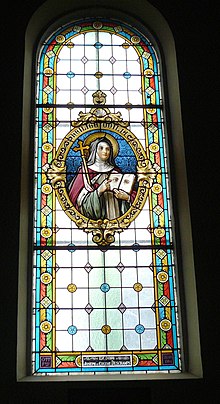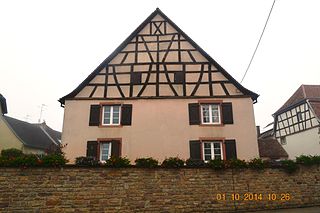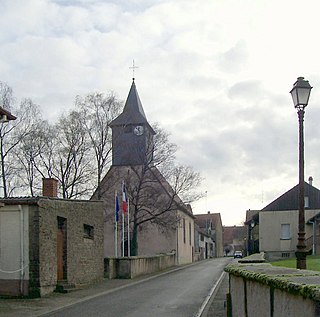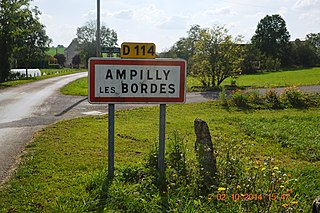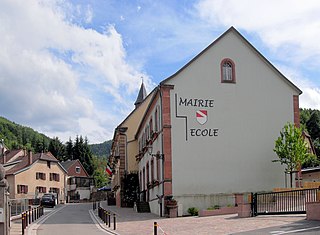Bassemberg | |
|---|---|
 A general view of Bassemberg | |
| Coordinates: 48°20′07″N7°17′03″E / 48.3353°N 7.2842°E Coordinates: 48°20′07″N7°17′03″E / 48.3353°N 7.2842°E | |
| Country | France |
| Region | Grand Est |
| Department | Bas-Rhin |
| Arrondissement | Sélestat-Erstein |
| Canton | Mutzig |
| Intercommunality | Vallée de Villé |
| Government | |
| • Mayor (2020–2026) | Emmanuel Eschrich [1] |
| Area 1 | 1.78 km2 (0.69 sq mi) |
| Population | 233 |
| • Density | 130/km2 (340/sq mi) |
| Time zone | UTC+01:00 (CET) |
| • Summer (DST) | UTC+02:00 (CEST) |
| INSEE/Postal code | 67022 /67220 |
| Elevation | 275–616 m (902–2,021 ft) |
| 1 French Land Register data, which excludes lakes, ponds, glaciers > 1 km2 (0.386 sq mi or 247 acres) and river estuaries. | |
Bassemberg (German : Bassenberg) is a commune in the Bas-Rhin department in the Alsace region of north-eastern France. [3]
Contents
- Geography
- Geology
- Toponymy
- History
- A village belonging to Frederick Cuntzmann Hattstatt
- A settlement
- A Jewish community
- The 1914-1918 war
- Second World War
- Heraldry
- Administration
- Demography
- Culture and heritage
- Architecture
- Civil heritage
- Religious heritage
- Notable people linked to the commune
- See also
- Bibliography
- References
The inhabitants of the commune are known as Bassembergeois or Bassembergeoises. [4]
The commune has been awarded one flower by the National Council of Towns and Villages in Bloom in the Competition of cities and villages in Bloom. [5]











